

Caledonian has been at the forefront of the design, manufacture and support of advanced aerospace display equipment for over 25 years.
The combination of Caledonian’s extensive range of video standard knowledge, both digital and analogue, combined with Caledonian’s embedded processor and video manipulation techniques has contributed significantly to the Caledonian’s Display product line.
Over 20 years ago Caledonian produced its first fully in house designed graphics card, and since then has built on this capability including in house embedded video technologies to realise video capabilities including real time video transposition and rotation, video analysis, video conversion, symbol overlay / underlay, real time zooming and scaling.
This has proven an invaluable asset when Airborne Maritime Surveillance Mission Systems are considered. Typically there is a desire to display a number of different sensors, with different resolutions and aspect ratios on a single FPD. Caledonian’s video technology has enabled the Scorpio Mission System to be highly adaptable.
To compliment the above Caledonian has also embodied extra capabilities into a single display enclosure, including Target Tracking and Analysis and integrated Symbol Generators.
Typically Caledonian designs and manufactures a new display type annually, such is the technical gearing of the Company. Subsequently, Caledonian is in a unique position to offer very high degrees of customisation to End Users requirements.
Displays are manufactured in accordance with the Company’s Scope of Approval and Caledonian’s Sub Part G certification. Where applicable Display Units are released with an EASA Form 1.
Caledonian’s displays are renowned for their reliability, boasting very high MTBF. Frequently Caledonian’s highly durable displays have replaced displays that have been in service and failed to live up to their manufacturer’s claims, notably, and in particular in demanding environments where excessive heat, humidity or cold are prevalent.
Caledonian’s displays can be supplied to be NVIS I, II or III Compliant.
Additionally, Caledonian excels at dealing with non-standard video and has supplied solutions for a number of customers in this respect.
The following is an example of some of the displays in Caledonian’s product line.
Versatile, High performance Aerospace Solutions
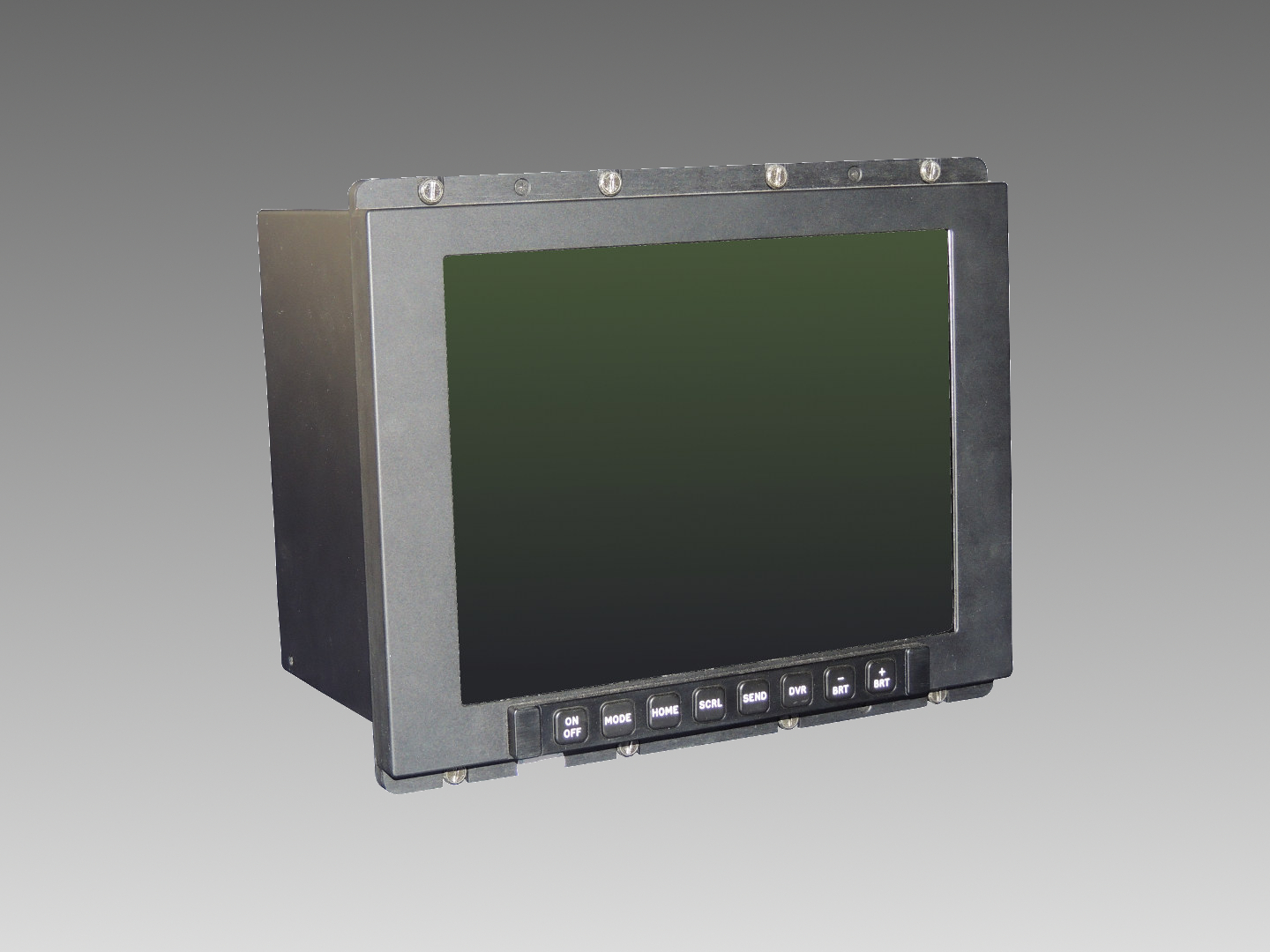
Caledonian has used this chassis for a number of different display applications. This chassis houses a 10.4 inch wide dynamic range, high brightness, display and was first designed by Caledonian in the mid 1990’s. Applications have included digitisation, display and conversion of non-standard radar video. As an example some eleven units were exported to a North American Navy operating near the equator in 1997.
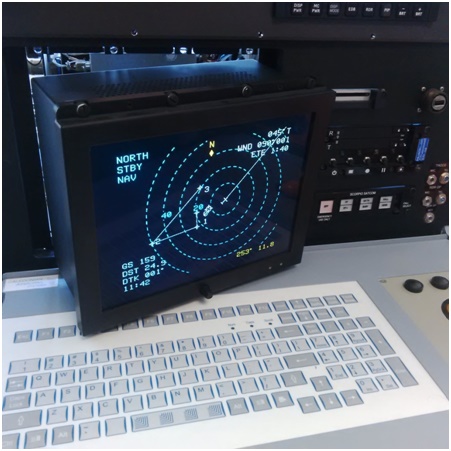
While all units undergo a heavy duty cycle, thus far two units have been returned for repair, one as a result of a accidental impact and another being subject to significant contact with a corrosive liquid. Within this self-contained display there is all the Caledonian electronics assemblies that convert the video, scale the video, switch between different resolutions and standards in a seamless fashion.
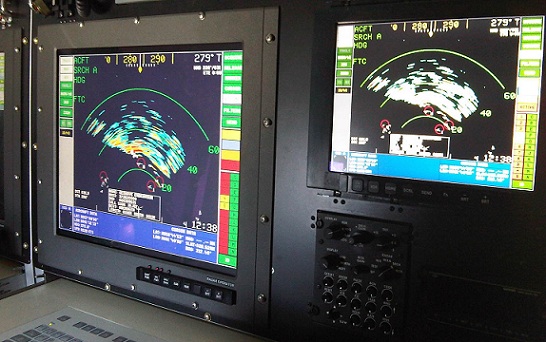
The same chassis has also been used to house Caledonian’s Track While Scan Radar enhancement. In the image opposite the same video is output from the TWS and sent to a 19inch display. Notably this is achieved with minimal data latency as the side by side images are indistinguishable as to which unit is the originator of the video, which, notably is of a different aspect ratio from one another.
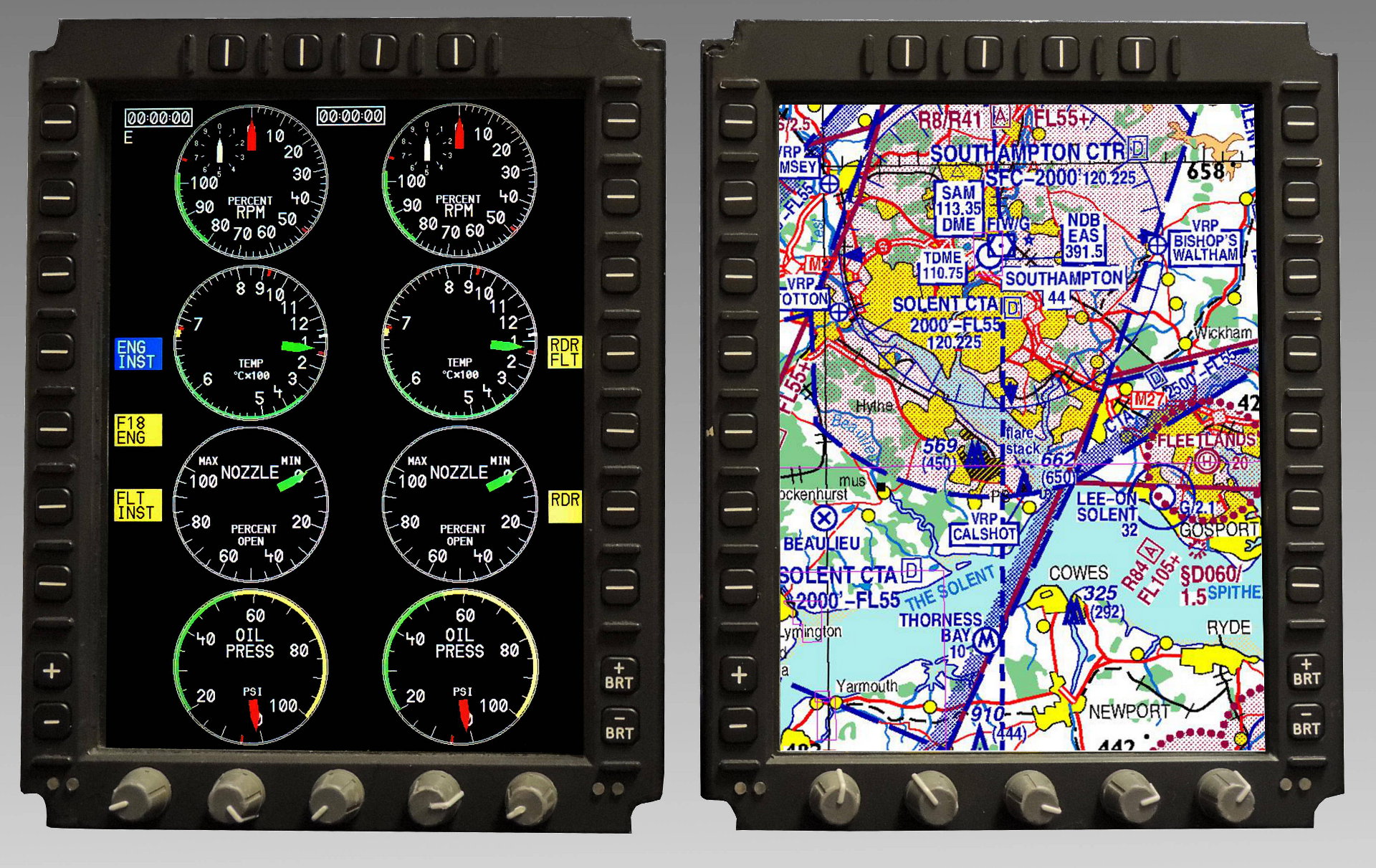
Shown opposite is Caledonian’s Portrait display. Again this is a 10.4 inch display, but housed in a different chassis equipped with bezel keys. The architecture is of particular interest as it rotates incoming video in real time with no frame loss. Each pixel is repositioned in less than 63 nsecs, again using Caledonian designed architectures.
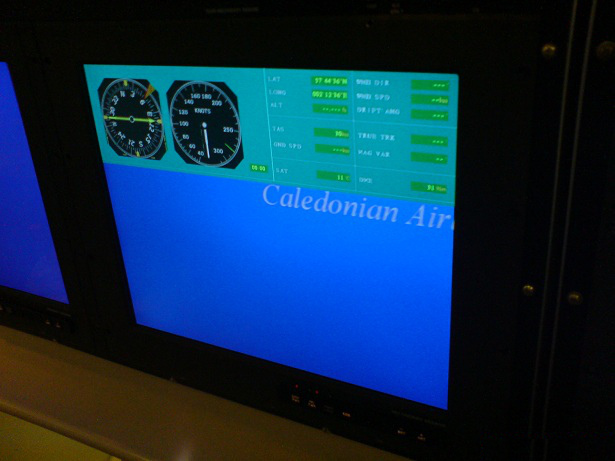
Both the TWS and the 19 inch display are equipped with an integrated Symbol generator. In the image opposite the End User required the ability to display different video channels at the press of a button, and also, on demand, activate an aircraft instrument overlay. The Flight Instrument and Navigational data are essential for increased situational awareness while directing the Airborne Maritime Surveillance Sortie. The data is derived from an array of aircraft instruments, it is decoded within one of the Scorpio Mission computers and sent as a single composite serial data stream to the display. The integrated Symbol generator, a Caledonian RTOS Embedded Architecture design, receives the data stream and creates the required symbology.
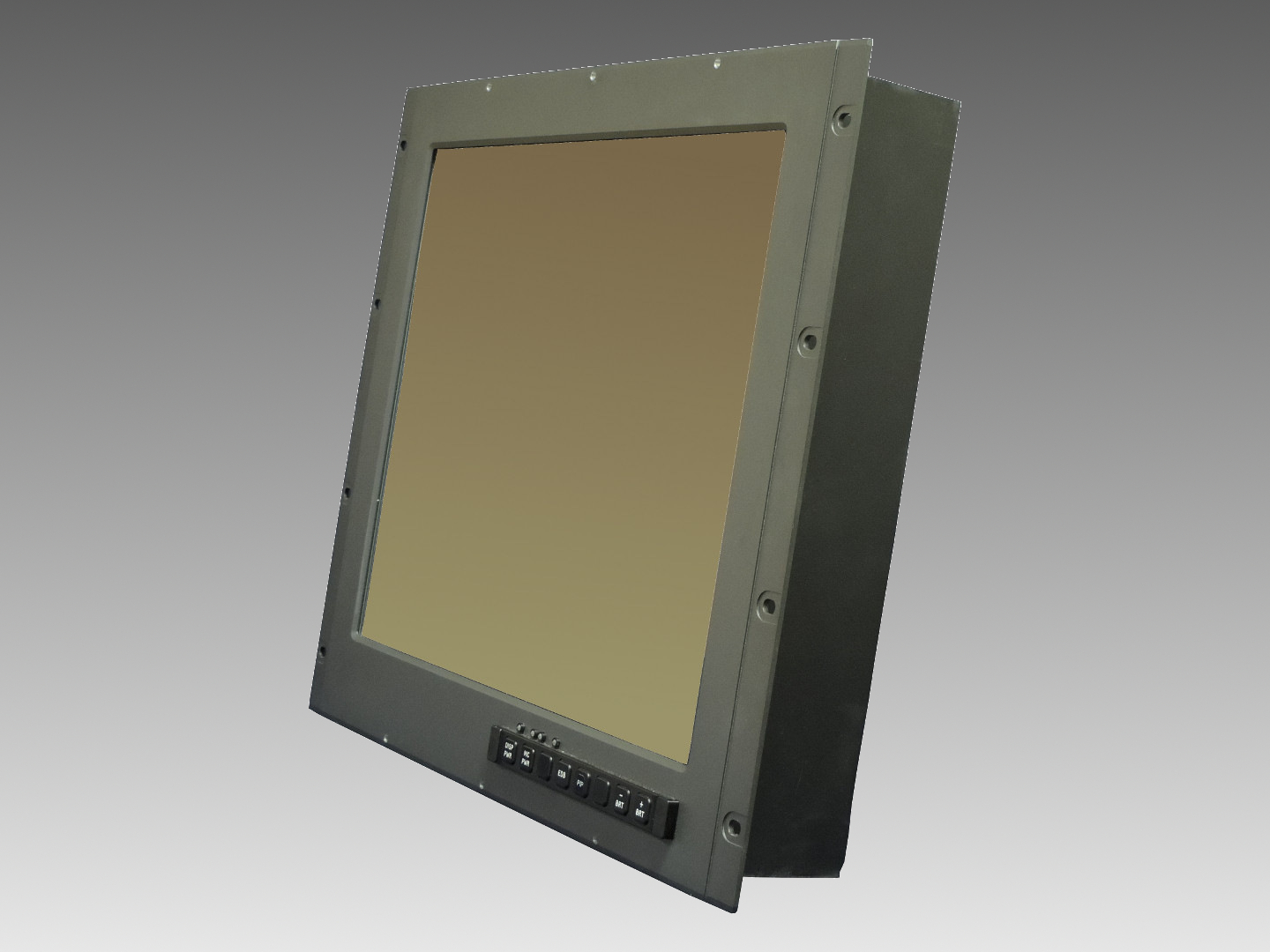
The 19 inch display has been used in a number of fixed wing and rotary wing applications. The internal electronics are extremely rugged and the unit has been tested to, and is compliant with DO-160E. Given that Caledonian is the OEM for this unit, a significant degree of customisation, video standards, conversions, outputs and Symbol Generator Overlay output, can be achieved if required.
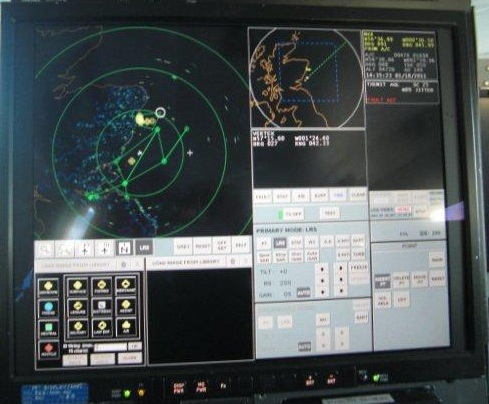
One size larger is Caledonian’s 21 inch display. Typically this has been used in conjunction with Caledonian’s Scorpio Mission System, in particular displaying Advanced E-scan radar video. As seen, opposite, a number of sub windows are displayed. Due to the high resolution of the display, these are crisp and sharp. As above the unit is manufactured in accordance with Caledonian’s Sub Part G approval and is issued with a Form 1.
Extremely High Levels of Integrated Capability in a Low Volume
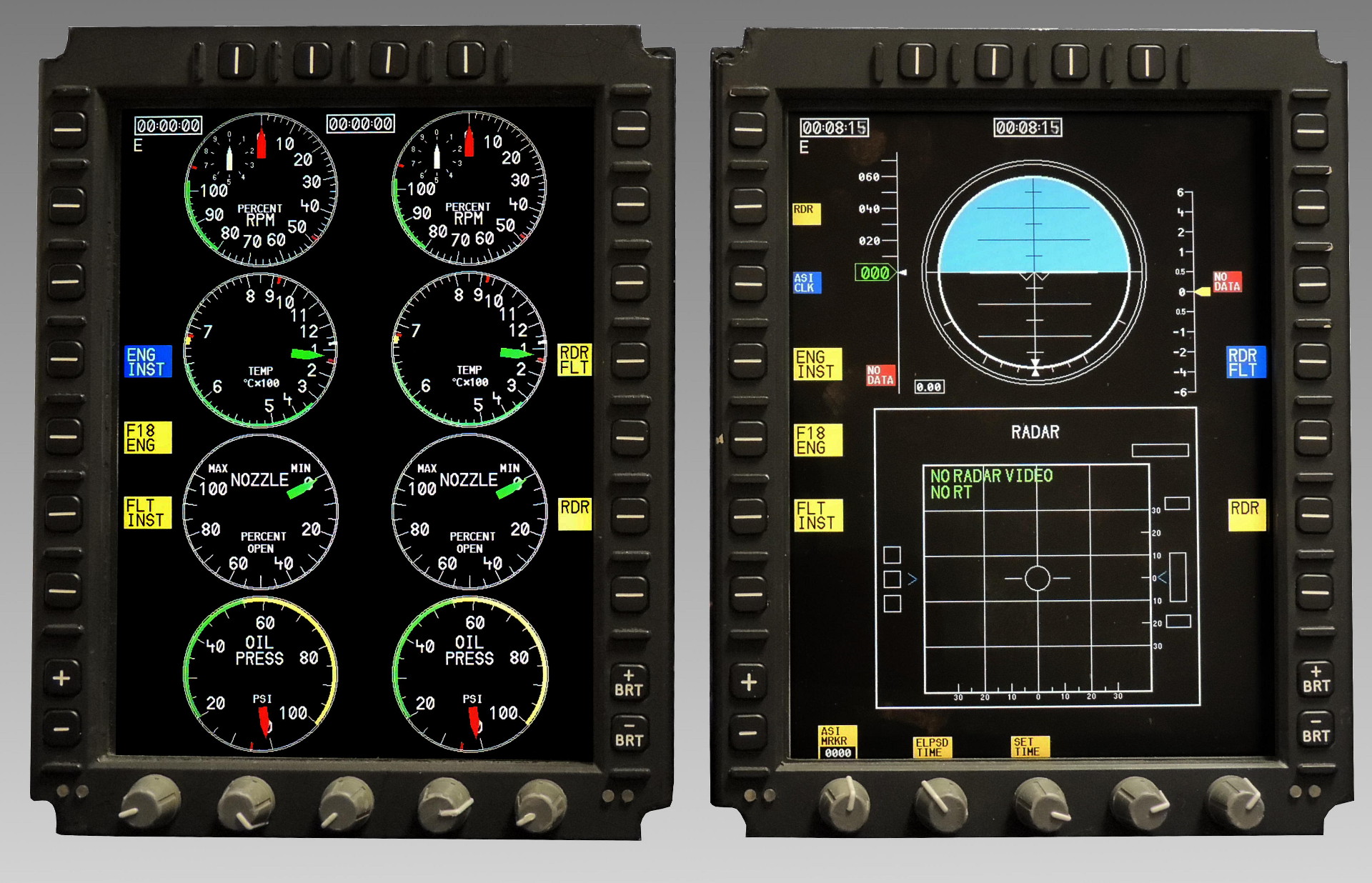
The CPT-186 is a ground breaking product for a number of reasons. The display technology is an 8.4 inch very high brightness (>2000 Cd.m-2 ). The volume within the chassis is very limited owing to the limited depth – in line with application requirement. Within this very finite volume there is a Symbol Generator, a bespoke Graphics card and all the necessary electronics assemblies to digitise / decode 18 aircraft instruments and to display mature radar video. Instruments include the ADI, VSI, VVI, Mach Indicator, Left and Right EGT, Nozzle Position, RPM, Oil Pressure, GPS data, Elapsed Time and GMT. Note also that the Incremental Encoders and Bezel located buttons can be used to call on different pages.
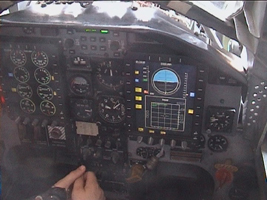
Due to the fact that the displays each have their own Graphics card, Symbol Generator and all the necessary electronics to decode the incoming signals there is a significant degree of redundancy available as both units are wholly self-sufficient. Again, all the internal technologies were designed and developed by Caledonian from first principals. Incoming signals were a mixture of mature analogue, digital, discrete and mature video standards.
High Resolution Low Real-Estate
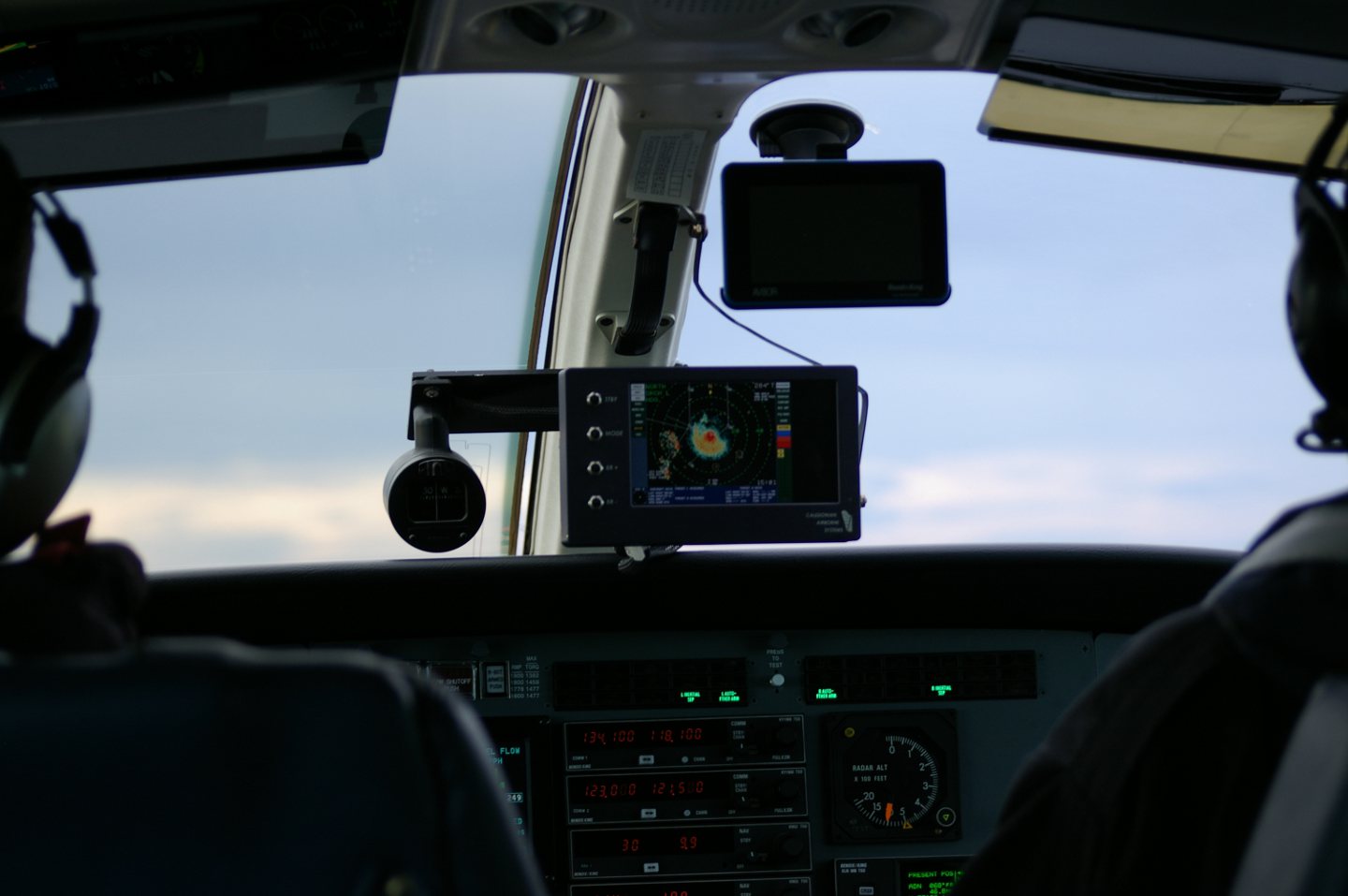
A common adjunct to Caledonian’s Scorpio Mission System is the FDD (Flight Deck Display). This display is designed with low real-estate requirements in mind and is usually positioned in the arm rest of the flight deck crew seat, around the glare shield, on the cockpit instrument panel, the cockpit pedestal or on the side fills. It is a high brightness very reliable display with a resolution of 1024 x 600. In the example shown it is used to display OE Sensors or Radar video. This is controlled by the Flight Deck Crew and is derived from the video available in the Scorpio Mission System.
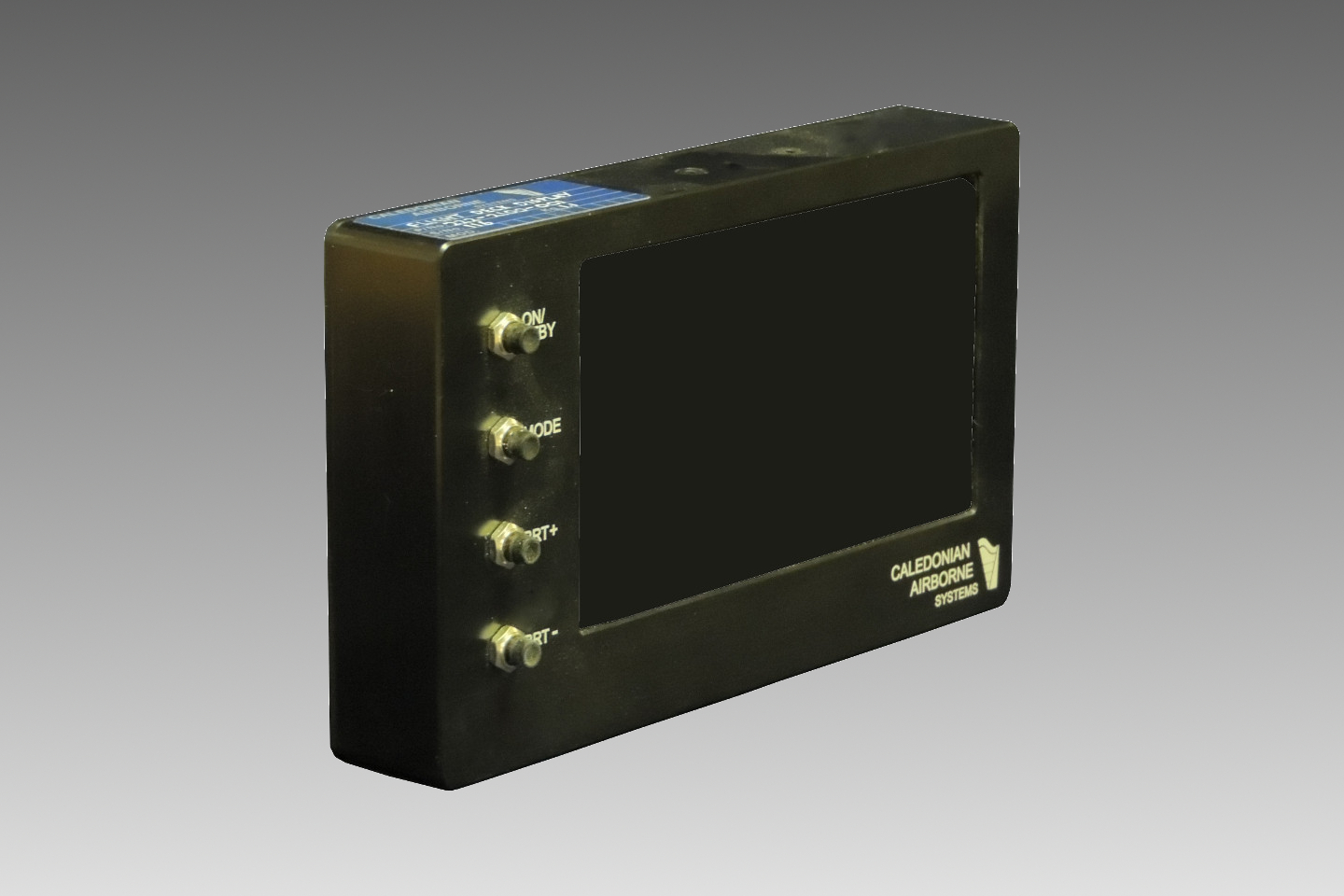
In particular for rotary wing installations the FDD has a zoom feature which can increase the size of a portion of radar screen on demand and is displayed in real time with minimal data latency.
In other applications, one of the symbol generators integrated within one of the Scorpio Mission Computers is used to send real time graphics to the Flight deck Crew. Again the Crew can select the vide they wish to see displayed using the bezel keys.
Multiple Video – Single Display
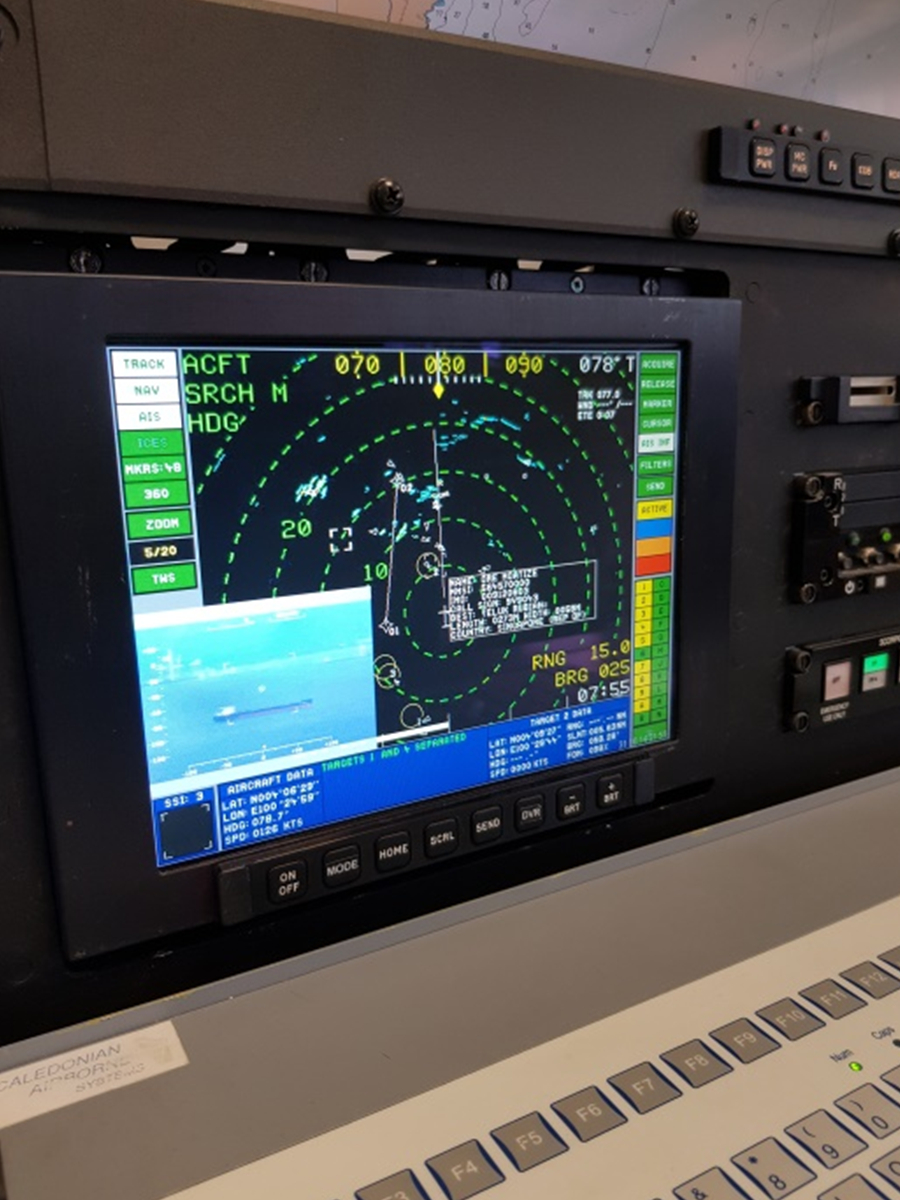
Caledonian’s display also have Picture in Picture and Picture by Picture Capabilities for applications where instrument panel or console fascia real-estate is finite, yet there is a desire to display different sensors simultaneously. Changes to the configuration of the screen can be preset and called up at the press of a single key.
Opposite, the display has TWS video with FLIR images inset. Both are real-time video, and notably, the TWS data can be used to steer the FLIR. In this example there are four modes which can be scrolled through at the press of a single bezel key. These are TWS Only, TWS / inset FLIR, TWS & FLIR Side By Side and FLIR Only.
As a guide, Caledonian has manufactured displays that display / convert analyse the following video Standards:
PAL, NTSC, CCIR, RS-170, Stanag 3350 A / B / C, Non Standard Radar Video, VGA (and derivatives), HDMI, DVI, LVDS, S-Video, SECAM and LCD Matrix Signals.